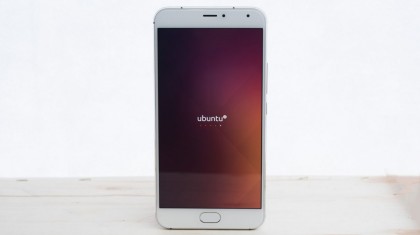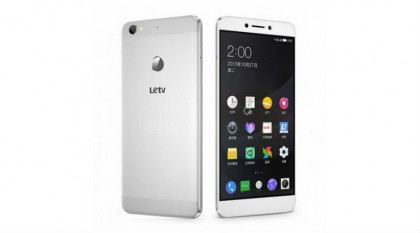Attack of the Chinese superphones: the brands Apple and Samsung should fear
The world's thinnest, lightest and most innovative phones
Meizu
Meizu entered the global conscious following the announcement of its M8 smartphone only four days after the original iPhone was announced.
It was regarded as an iPhone clone, with a similar interface and design, and the reality did little to change that perception, running as it did a modified version of Microsoft's Windows CE 6. By 2010 Apple had successfully pressured Meizu in to shutting down production of the M8.
A shift in focus brought the MX in 2012 - the first of its smartphones to be released outside of mainland China. Meizu hadn't gone far however, launching just across the bay in Hong Kong. A second variation - the MX2 - branched out even further, reaching as far afield as Israel.

Now, further down the line, Meizu is continuing to innovate with devices such as the Pro 6, among the first Android devices in the world to feature a pressure-sensitive display, much like the iPhone 6S.
Meizu's position has dropped slightly in recent years, it is no longer part of the big five guns, but it still has the chops to succeed, especially if its partnership with Ubuntu-maker Canonical pays off.
Xiaomi
Founded in 2010, Xiaomi churned out 19 million smartphones in 2013 and has rapidly risen to become one of the leading tech firms in its homeland.
Originally it was more focused on releasing Android firmware known as MIUI. The custom firmware resembled hints of Samsung's TouchWiz UI and Apple's iOS, and was available as an aftermarket download for many smartphones available in China.
Get daily insight, inspiration and deals in your inbox
Sign up for breaking news, reviews, opinion, top tech deals, and more.
In late 2011 the Mi-One phone was announced featuring the MIUI software, which thanks to its Apple-esque interface proved popular amongst Chinese smartphone users, in a time when the iPhone was still unavailable in the People's Republic.
The brand was then confident enough to strike out with its own designs, as Xiaomi's next phones the Mi2 and Mi3, went in a different style direction and an interface that had matured beyond a pseudo-clone of Apple's own.

Showing intent to take their phones international, Hugo Barra (previously vice president of Android product management at Google) was poached to become vice president at Xiaomi Global.
On his departure from the Android stable he was quoted as saying that he intended to "help them expand their incredible product portfolio and business globally", which cemented Xiaomi's international intentions.
Xiaomi has released a few devices in the West, namely an activity tracker, an action camera and a power bank. It recently bought a large thwack of patents, and is expected to enter the West at full force in the near future.
Currently it's experiencing some considerable turmoil in its home market, which it has traditionally dominated. Although it was among the first Chinese firms to really gain dominance, other consumers have since opted to switch to other manufacturers, meaning that Xiaomi has dropped to the 5th biggest smartphone manufacturer in the world.
Nonetheless, it is never wise to count Xiaomi out, there is still plenty of fight left in it yet.
LeEco
First founded in 2004, LeEco is shorthand for what the firm hopes to achieve, a 'Le Ecosystem', and to some extent it has achieved this. Boasting a strong media presence throughout China, especially with regards to online video, LeEco has a history of success when entering new markets, it is even currently working on development of its first electric car.
The smartphone market is one of the firm's most recent dalliances, but by all accounts it seems to have found some considerable success even at this early stage of the game, at least in the media stakes.
It is the Le Max 2 that represents the height of the company's ambitions at the moment, and it is indeed something of a monster. With a 5.7-inch QHD screen, Snapdragon 820 processor, 6GB of RAM, 16MP camera and more, it is equipped to battle with the best.

Indeed, almost as proof of its confidence in its own abilities, every phone released by the manufacturer comes without a 3.5mm headphone jack. While it claims that this results in better design and cleaner audio playback, it is still something of an oddity (although this may yet change if reports about the iPhone 7 prove to be true).
Focused on India at the moment, and still consolidating gains in its home market, LeEco is a player to watch in coming years, as its boundless ambition and considerable energy will likely take it to distant shores, indeed the firm has since announced that it will shortly be bringing its products to the USA.
So which is the one to watch?
It's difficult to predict how well any of these brands will do if they managed to break in to the more developed smartphone market, but outside of the established brands of Huawei and OnePlus, Lenovo stands out with the strongest chance of success.
It's already a household name with a successful home computing division, and with its acquisition of Motorola, there's plenty of global marketing power to enable it to be a competitive force.
Oppo has already started to make inroads into the European market , and it's not an unimaginable step for it to coerce some of the networks into stocking some of its innovative flagships.
Should Apple, HTC and Samsung really be afraid of any of these brands? For the most part, not yet, but they're likely to be getting nervous.